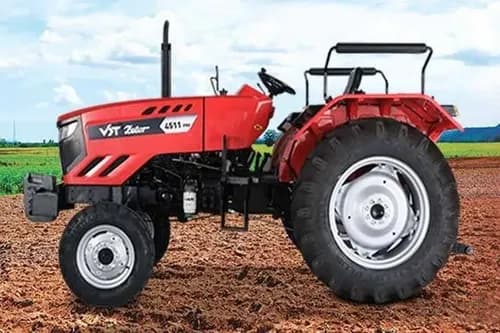Ad
Ad
Ad
January Farming Essentials: Rabi Crop Insights for Indian Agriculture

Rabi crops are crops that are sown in the winter season, from October to January, and harvested in the summer season, from April to June. These crops are important for the Indian agriculture sector, as they contribute to the food security, income generation, and employment of millions of farmers. Some of the major rabi crops grown in India are wheat, mustard, gram, barley, and peas.
All about Rabi Crop Cultivation in India-
In this article, we will discuss some of the essential aspects of rabi crop cultivation in India, such as:
- The climatic and soil requirements for different rabi crops
- The best practices for seed selection, sowing, irrigation, fertilization, pest and disease management, and harvesting
- The challenges and opportunities faced by rabi crop farmers in the current scenario
- The government schemes and initiatives to support rabi crop production and marketing.
Climatic and Soil Requirements for Rabi Crops
Rabi crops require a cool and dry climate during the growth period and a warm and dry climate during the maturity period. The ideal temperature range for rabi crops is between 10°C to 25°C. Rabi crops also need adequate rainfall during the sowing period and irrigation during the critical stages of growth. Excess rainfall, frost, hailstorms, and high temperatures can adversely affect the yield and quality of rabi crops.
The soil requirements for rabi crops vary depending on the crop type and variety. Generally, rabi crops prefer well-drained, fertile, and loamy soils with a pH range of 6.0 to 7.5. Some rabi crops, such as wheat and barley, can also grow in sandy loam and clayey soils, while some, such as mustard and gram, can tolerate saline and alkaline soils. The soil should be prepared well before sowing by ploughing, harrowing, levelling, and applying organic manure and lime if needed. Massey Ferguson 245 DI is one of the tractors mostly used by the farmers that increases productivity and results in high yields, to know more about the tractor you can watch the video given below.
Best Practices for Rabi Crop Cultivation
The following are some of the best practices for rabi crop cultivation that can help farmers achieve higher yields and better quality of their produce:
Seed selection:
Farmers should select high-yielding, disease-resistant, and climate-tolerant varieties of rabi crops that are suitable for their region and soil type. They should also use certified seeds or quality seeds from their farm that are free from weeds, pests, and diseases. The seeds should be treated with fungicides, insecticides, or bio-agents before sowing to prevent seed-borne infections and enhance germination.
Sowing:
Sow rabi crops at the optimum time and spacing to ensure proper plant establishment and growth. The sowing time depends on the crop type, variety, and weather conditions, but generally, it ranges from October to December. The spacing between rows and plants should be maintained according to the crop type, variety, and soil fertility. Farmers should also use appropriate methods of sowing, such as broadcasting, drilling, dibbling, or transplanting, depending on the crop type and soil condition.
Irrigation:
Adequate and timely irrigation should be provided to these crops to meet their water requirements and avoid moisture stress. The frequency and amount of irrigation depend on the crop type, growth stage, soil type, and weather conditions, but generally, rabi crops need 3 to 6 irrigations during their life cycle. The first irrigation should be given soon after sowing to ensure uniform germination and emergence, while the last irrigation should be given before the onset of flowering to enhance grain filling. Farmers should also avoid over-irrigation and waterlogging, as they can cause root rot, fungal infections, and nutrient leaching.
Fertilization:
Farmers should apply balanced and adequate doses of fertilizers to rabi crops to supply them with the essential nutrients for growth and development. The type and amount of fertilizers depend on the crop type, variety, soil type, and soil test results, but generally, rabi crops need nitrogen, phosphorus, potassium, and micronutrients, such as zinc, boron, iron, and manganese. Farmers should apply fertilizers in split doses, with the first dose at the time of sowing or soon after, and the second dose at the tillering or vegetative stage. Farmers should also use organic sources of nutrients, such as farmyard manure, compost, vermicompost, green manure, and bio-fertilizers, to improve soil health and crop productivity.
Pest and disease management:
Adopt integrated pest and disease management (IPDM) strategies to protect rabi crops from various pests and diseases that can reduce their yield and quality. IPDM involves the use of cultural, mechanical, biological, and chemical methods of pest and disease control in a compatible and sustainable manner. Some of the IPDM practices for rabi crops are:
- Crop rotation: Farmers should rotate rabi crops with other crops, such as legumes, oilseeds, or fodder crops, to break the pest and disease cycles and improve soil fertility.
- Intercropping: Farmers should intercrop rabi crops with other crops, such as mustard, garlic, onion, or coriander, to enhance crop diversity and reduce pest and disease incidence.
- Trap cropping: Farmers should plant trap crops, such as marigold, sunflower, or castor, around the main crop to attract and trap pests and prevent them from reaching the main crop.
- Biological control: Farmers should use natural enemies, such as predators, parasitoids, or pathogens, to control pests and diseases. For example, farmers can release ladybugs, lacewings, or Trichogramma wasps to control aphids, whiteflies, or stem borers, respectively.
- Chemical control: Farmers should use chemical pesticides only as a last resort and judiciously and safely. They should select the right pesticide, dose, time, and method of application, and follow the label instructions and safety precautions. They should also avoid spraying pesticides during the flowering stage to protect the pollinators and the environment.
Also Read- How to Prevent Pest and Disease Outbreaks in Winter Crops?
Harvesting:
Farmers should harvest rabi crops at the right time and in the right way to ensure maximum yield and quality of their produce. The harvesting time depends on the crop type, variety, and weather conditions, but generally, it ranges from April to June. Farmers should harvest rabi crops when they are fully mature and dry, and avoid harvesting them when they are wet or immature. Farmers should also use proper tools and techniques for harvesting, such as sickles, knives, threshers, or combines, and avoid causing damage or loss to the crop. Farmers should also clean, sort, grade, and store their produce hygienically and safely to prevent spoilage and deterioration.
Conclusion
Rabi crops are vital for the Indian agriculture sector, as they provide food, income, and employment to millions of farmers. However, rabi crop cultivation also faces various challenges, such as climate change, water scarcity, pest and disease outbreaks, market fluctuations, and policy gaps. Therefore, farmers need to adopt the best practices for rabi crop cultivation, such as selecting suitable varieties, sowing at the right time and spacing, irrigating and fertilizing adequately, managing pests and diseases effectively, and harvesting and storing properly. Moreover, farmers need to avail the benefits of the government schemes and initiatives that aim to support rabi crop production and marketing. By following these steps, farmers can enhance their rabi crop productivity, profitability, and sustainability.
Features & Articles
Top 7 Sonalika Mini Tractors for Efficient Farming
Explore the top 7 Sonalika mini tractors, featuring compact designs, advanced features, and affordable prices for efficient farming....
06-Jan-25 10:27 AM
Read Full NewsTop 10 Tractors Within the 35 HP Range: Best Models for Agricultural Practices
Explore top 35 HP tractors from Mahindra, Sonalika, and John Deere, designed for efficiency, power, and versatility....
30-Dec-24 11:58 AM
Read Full NewsTop-Selling Solis Tractors: 5015 E and 5015 E 4WD – Features and Applications
Solis tractors combine advanced Japanese technology, durability, and versatility, delivering high performance for agricultural and industrial applications at affordable p...
27-Dec-24 03:56 PM
Read Full NewsWheat Price Forecast for 2025: What to Expect Across Major Indian States
Wheat prices in 2025 are expected to fluctuate, with strong market conditions and better prices in key wheat-producing states....
26-Dec-24 10:07 AM
Read Full NewsKisan Diwas 2024: Honoring Farmers and Promoting Sustainable Agriculture
Kisan Diwas celebrates farmer’s contributions, honors Chaudhary Charan Singh's legacy, and promotes sustainable agriculture through awareness, innovation, and support....
23-Dec-24 06:57 AM
Read Full NewsJohn Deere 5050 D vs Eicher 551 4WD Prima G3: Detailed Tractor Comparison
Compare the John Deere 5050 D and Eicher 551 4WD Prima G3 tractors based on performance, features, and pricing....
03-Dec-24 12:08 PM
Read Full NewsAd
Ad
As featured on:


Registered Office Address
Delente Technologies Pvt. Ltd.
M3M Cosmopolitan, 12th Cosmopolitan,
Golf Course Ext Rd, Sector 66, Gurugram, Haryana
pincode - 122002

























